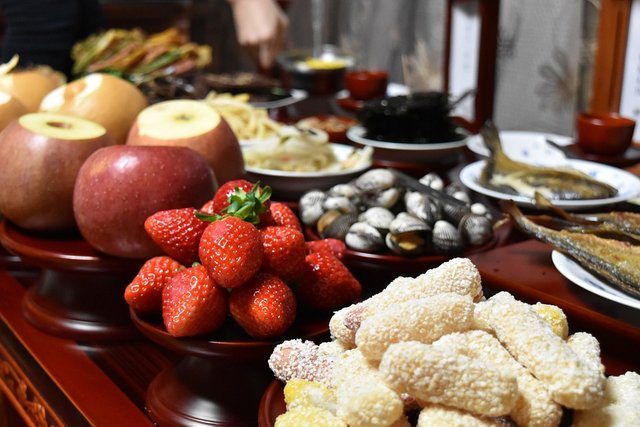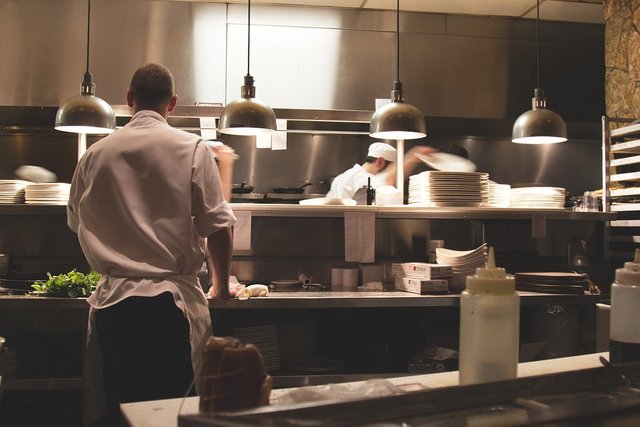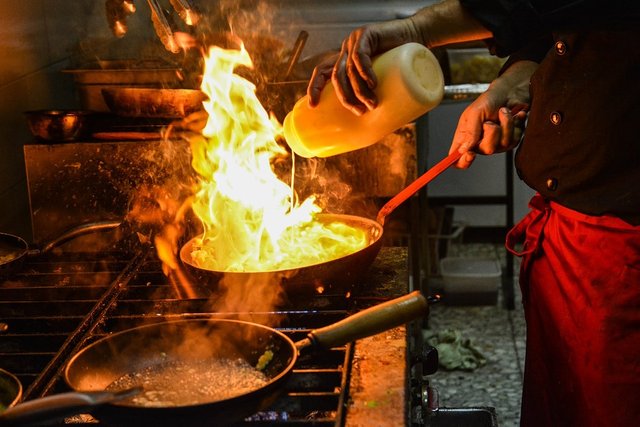Subcultures and Social Trends: The Foodie – An Obsession with Food and Flavor that has Lasted Centuries

Essential to life and the piece which brought the tribe together around the fire, food has been as much a staple of social structure as it has been a staple of nourishment. From food, we learn about diverse cultures both through flavor and conversation. Breaking bread has become a symbolic metaphor for brokering peace.
Potatoes engaged with the aroma of black truffle, civet coffee beans, the most expensive coffee bean in the world, fermented in the stomach of the Asian Palm Civet, then collected after defecation, or the delicacy of Durian fruit which has been described as having an odor reminiscent of rotten onions, turpentine and raw sewage…
Welcome to the subculture of the foodie.
A Brief History of the Foodie Subculture and the Celebrity Chef

The popular misconception about the foodie subculture is that it’s a more recent invention, courtesy of the prevalence of easy food, the ease of obtaining exotic ingredients and the explosion of a multitude of new cooking methods courtesy of technology. History would suggest this could not be further from the truth.
The birth of the foodie subculture begins in the early days of the Roman Republic. The life of a Roman citizen in the early days of the republic was modestly austere and the staples of the pantry reflected that austerity for the average Roman citizen. As a consequence, food assumed a prominent role in the republic, houses of the rich and powerful were adorned with mosaics of food and elaborate dining became a way to communicate status.
It was during this period (around 90 BC) an individual named Gavius Apicius wrote what is considered to be the very first cookbook titled, “De Re Coquinaria”. In this cookbook he wrote out his recipe for his barbecued beef burgers,
“…which mixes minced meat with bread soaked in white wine, stone-ground pine kernels, green peppercorns and salt. The mixture was formed into small balls and cooked over a fire.”
What is noteworthy about Apicius is he is also the first celebrity chef in history. His notable list of nobles and noteworthy Roman society he cooked for and dined with included: Sejanus (confidant of the emperor Tiberius), Drusus (son of Tiberius), Junius Blaesus (Roman consul) and Lucius Antistius Vetus (Roman consul). Historic documents state he was known for spending lavishly and without regard for consequence. He allegedly spent 100 million Sestertii on his kitchen and at a median reference rate of about 3 USD per Sesterces, it is the equivalent of 300 million USD on his kitchen. When his lavish spending pulled his total holdings down to 10 million Sestertii, Apicius was filled with fear of dying in poverty and opted to poison himself instead.
The next major milestone of the foodie subculture occurred in France during the mid 1600s. It was the age of King Louis XIV and Versailles; all the world’s a stage in the king’s court and food was no exception. It is during this era, we meet Francois Vatel, celebrity chef, impresario of his day and the originator of Chantily Cream. In April 1671, Monsieur Vatel was tapped by his master, the Count de Conde, to stage a spectacularly massive, 2000 person feast in honor of the Sun King, Louis XIV at the Chateau de Chantilly.
History states during this spectacular feast it appeared the seafood ordered for the feast would not arrive for the spectacle. As a result, Monsieur Vatel became so distressed; he committed suicide by running himself through with his sword in the middle of dinner service, forever placing him in the annals of culinary history as the first true martyr of gastronomy. The sad irony of the situation is that his body was discovered by a servant rushing to inform him the seafood had just arrived.
The next major milestone in the foodie subculture is the rise of haute cuisine, courtesy of the grandfather of haute cuisine and the first international celebrity chef, Marie-Antione Careme.
”Carême gained fame in Paris for his pièces montées, elaborate constructions used as centerpieces, which Bailly had displayed in the pâtisserie window. He made these confections, which were sometimes several feet high, entirely out of foodstuffs such as sugar, marzipan, and pastry. He modeled them on temples, pyramids, and ancient ruins, taking ideas from architectural history books….”
Careme’s pivotal moment came when the famous diplomat and gourmand Talleyrand challenged Careme to produce an entire year’s worth of menus, without repetition and using only seasonal produce. He succeeded and became Talleyrand’s Chef du Cuisine. After the fall of Napoleon he became the personal chef to notable individuals such as King George IV and the banker James Mayer Rothschild.
Careme’s most notable influences to modern haute cuisine include: creating the standard chef’s hat, the classification of all sauces into four groups based upon mother sauces and serving food in courses as opposed to all at once.
Finally, we arrive to the twentieth century and the man responsible for the next major evolution in the foodie subculture: celebrity chef Auguste Escoffier, the king of chefs and the chef of kings.
“Escoffier published Le Guide Culinaire, which is still used as a major reference work, both in the form of a cookbook and a textbook on cooking. Escoffier's recipes, techniques and approaches to kitchen management remain highly influential today, and have been adopted by chefs and restaurants not only in France, but also throughout the world.”
Modern foodie subculture and the culinary gods they worship have developed and support a multitude of temples of gastronomy and continue to evolve the art of cooking. Interestingly, history does show something interesting about the foodie subculture, the rise of the celebrity chef and what it portends,
“Strangely perhaps, there’s another profession that is disproportionately hallowed as an empire declines. The Romans, the Ottomans, and the Spanish all made celebrities of their chefs.”
What Exactly is a Foodie?

”The ‘foodie’ -- not as elitist as a gourmet, more discriminating than a glutton….”
In the broadest sense, the foodie subculture is viewed as a hobbyist group with interests and activities as diverse as food industry, wineries, tastings, food science, cooking classes, restaurant management, etc. The foodie’s hobby can also be as specific as the collector of the absolute best craft beer or hot sauce connoisseur.
As with many subcultures, there is a fine line between enthusiast and obsessive. In almost diametric opposition to the Breathairians, the idea of too much may not be enough. For instance, Jeffery Steingarten, the very famous Vogue magazine restaurant critic stated he, “spends the afternoon – or a week of afternoons – planning the perfect dinner of barbecue ribs or braised foie gras.” Michael Pollan boasted of his 36 hour dinner party.
The excesses of the foodie subculture are not limited to the present day. In the ancient world, there was a very famous herb, Silphium, which was the rage of the ancient world it had a sharp, sour taste and grew in North Africa. The demand for this herb as a condiment was so great; the plant was consumed into extinction. In fact, history records that the Roman emperor Nero publically consumed the last Silphium ever foraged.
Needless to say, mainstream media is loaded with anything and everything foodie, including Scripps which owns the ever so popular Food Network and Cooking Network (because one just ain’t enough).
- Saveur, (http://www.saveur.com/)
- Food and Wine Magazine, (http://www.foodandwine.com/)
- Veg News, (http://vegnews.com/)
- Smithsonian Magazine, (http://www.smithsonianmag.com/arts-culture/anthony-bourdains-theory-foodie-revolution-180951848/?no-ist)
- The Atlantic, (http://www.theatlantic.com/magazine/archive/2011/03/the-moral-crusade-against-foodies/308370/)
- The Food Network, (http://www.foodnetwork.com/)
“It won’t be surprising if cultural historians look back on the first two decades of this century as The Era of Crazed Oral Gratification. I’m speaking of the fetishization of food, of cooking and eating, of watching other people cooking and eating, that has become omnipresent across all platforms, all media, all screens and all palates in our great nation.”
Capitalism and the Foodie Marketplace

The marketplace for the foodie is incredibly deep and exhaustive. Just a few facts from the National Restaurant Association about the restaurant industry in America:
- 782.7 billion: Restaurant industry sales.
- 1 million+: Restaurant locations in the United States.
- 14.4 million: Restaurant industry employees.
- 1.7 million: New restaurant jobs created by the year 2026.
- 10%: Restaurant workforce as part of the overall U.S. workforce.
The foodie subculture lives in a time when the subculture has become the mainstream. With sites such as Yelp and Grubhub, one can find the greatest restaurants and have food delivered or a reservation booked at the click of a mouse. With sites such as Accidental Wine, one can have the greatest vintages delivered to your doorstep.
Anthony Bourdain, famous chef and author of the book Kitchen Confidential presents his thoughts for the reason the foodie subculture has caught fire in the United States,
“We are changing societally, and our values are changing, so that we are becoming more like Italians and Chinese and Thais and Spaniards, where we actually think about what we’re eating, what we ate last night, and what we’re considering eating tomorrow. When I grew up in the ’60s, we’d go to see a movie, then we would go to a restaurant. And we would talk about the movie we just saw. Now, you go right to dinner and you talk about the dinner you had last week and the dinner you’re going to have next week, while you’re taking pictures of the dinner you’re having now. That’s a very Italian thing. A lot of the sort of hypocrisy and silliness and affectation of current American food culture is just fits and starts, awkwardly and foolishly growing into a place where a lot of older cultures have been for quite some time.”
References
Wikipedia. “Marcus Gavius Apicius” N.p. September 8, 2016. https://en.wikipedia.org/wiki/Marcus_Gavius_Apicius
Wikipedia. “Francois Vatel” N.p. February 13, 2016. https://en.wikipedia.org/wiki/Fran%C3%A7ois_Vatel
Wikipedia. “Marie-Antoine Carême” N.p. September 20, 2016. https://en.wikipedia.org/wiki/Marie-Antoine_Car%C3%AAme
Wikipedia.”Foodie”. July 27, 2016. https://en.wikipedia.org/wiki/Foodie
Explore Italian Culture. “Ancient Roman Daily Life.” N.p. 2008-2016. http://www.explore-italian-culture.com/ancient-roman-daily-life.html
Freedman, Paul. “Celebrity Chefs, Past and Present.” MAD. August 24, 2014. http://opentranscripts.org/transcript/celebrity-chefs-past-present/
Mosthof, Mariella. “A Brief History of Celebrity Chefs (1577-Preset).” Mediaite.com. March 26, 2016. http://www.mediaite.com/food/a-brief-history-of-celebrity-chefs/#3
Joyce, Barnaby. “Why Celebrity Chefs Herald the End of an Empire.” Barnaby is Right. February 25, 2010. https://barnabyisright.com/2013/03/30/why-celebrity-chefs-herald-the-end-of-empire/
Rosenbaum, Ron. “Anthony Bourdain’s Theory on the Foodie Revolution.” Smithsonian. July 2014. http://www.smithsonianmag.com/arts-culture/anthony-bourdains-theory-foodie-revolution-180951848/?no-ist